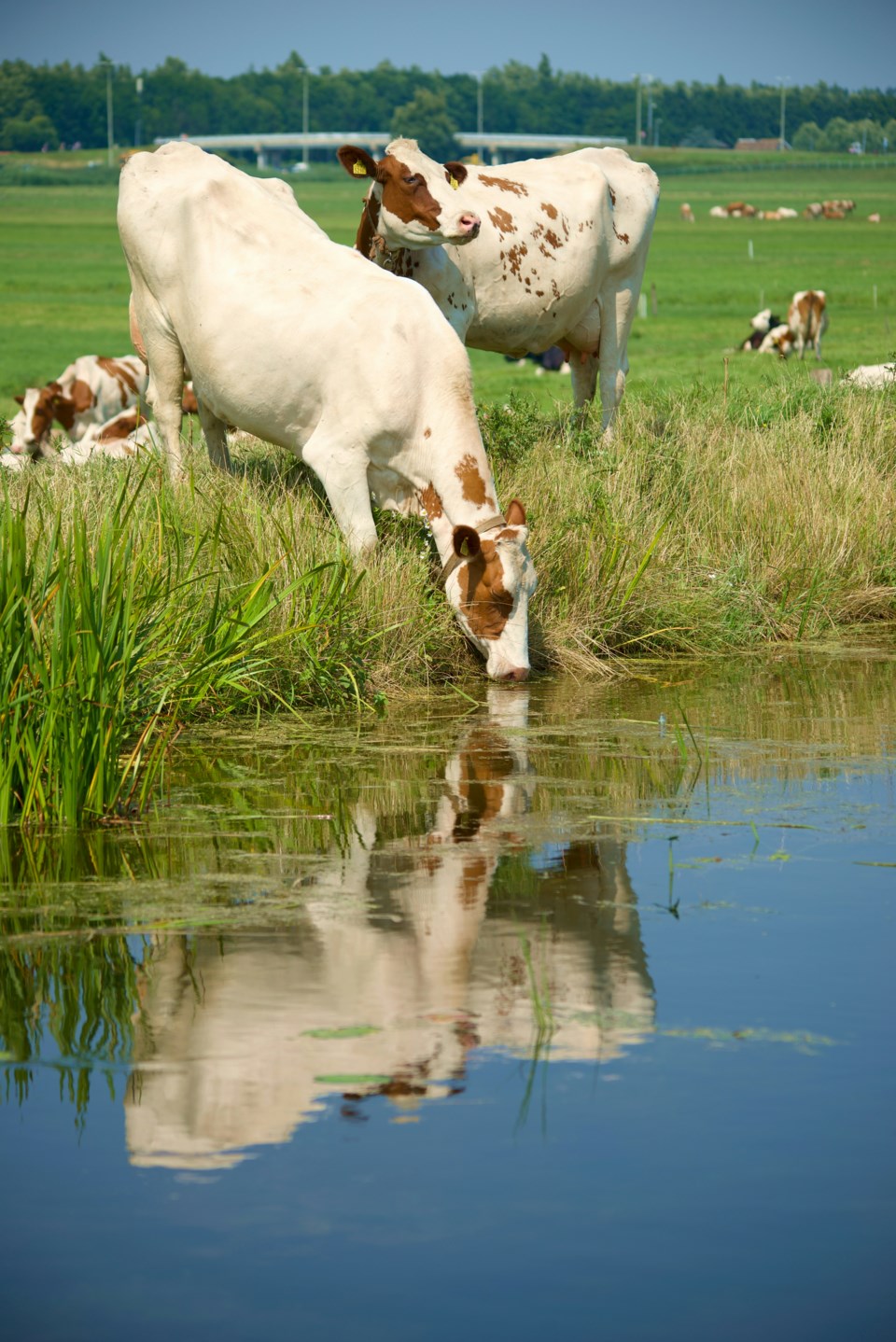SASKATCHEWAN – With many livestock producers moving their herds to pastures for the summer, much preparation is needed. Yet, with all that needs to be done, often times the quality of the water source is overlooked.
There are numerous factors that can affect the quality of surface water sources such as dugouts. While most dugouts are fed from the bottom with saline ground water, some dugouts are fed by spring run-off. This can impact the quantity and quality of the water, starting with naturally high mineral levels. Without freshwater recharging and summer evaporation, the mineral content gets to a point where the water is not suitable by fall.
Water testing not only determines what the levels are at but can also determine why animals are experiencing symptoms of illness.
According to the Government of Saskatchewan’s website under livestock water quality, water deemed safe for livestock consumption has less than 3,000 parts per million (ppm) of total dissolved solids and less than 500 ppm of sulphates. Anything over those numbers can cause symptoms of diarrhea, stunted growth, inability to lactate and reduced performance in the animals.
While handheld conductivity meters have been becoming increasingly popular, lab testing continues to be the best way to test for dissolved minerals and sulphates.
On average, a nursing cow can drink roughly 15 gallons of water a day, while bred dry cows, heifers and bulls will consume close to 12 gallons each. Weaning calves will drink anywhere from eight to 12 gallons of water, depending on their weight. Finishing cattle will take in almost 19 gallons per animal per day. These water requirements are only estimates and could increase with hotter temperatures.
Ideally, cattle should be taking in water from a clean source, however not every system will work in all situations. Keeping the animals physically out of the water will not only increase how much water is available but will also increase the water quality.
There are a few varying options for producers to consider:
Access ramps: help with access to the water as well as preserving the slopes at the water site. This also limits the nutrients entering the water from manure and urine.
Nose pumps: the animals use their nose to pump the water. The animals will need to learn how to use the system and it is recommended one pump will tend up to 25 or 30 animals.
Gravity flow reservoirs: some excavation is needed to install this system. It is not ideal for all sites as water must flow downhill from the source to the trough.
Solar pumping stations: using power from the sun, this system works well in remote locations. Storage for batteries and water is needed with this system.
Windmills: ideal for remote locations and requires little maintenance. Depending on wind variability, water storage may be necessary.
With each option with their own list of pros and cons, the idea of having safe water for the livestock is what matters the most. Reaching out to a Livestock and Feed Extension Specialist can help any livestock producer determine which system would work best for the location, along with making use of the Farm and Ranch Water Infrastructure Program.
For further information on water testing, any of the systems or programs available, reach out to your local Ministry of Agriculture Regional Office.




